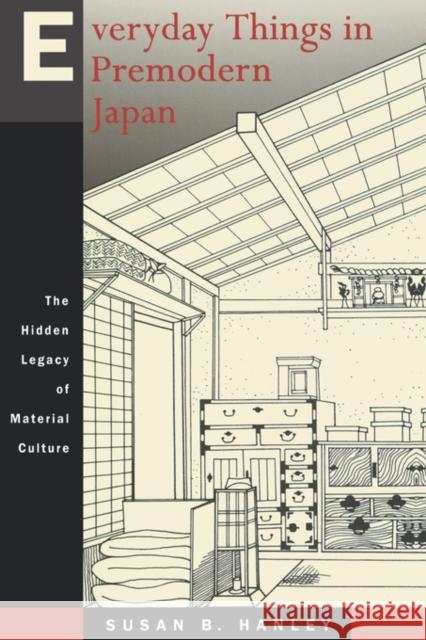Everyday Things in Premodern Japan: The Hidden Legacy of Material Culture » książka
Everyday Things in Premodern Japan: The Hidden Legacy of Material Culture
ISBN-13: 9780520218123 / Angielski / Miękka / 1999 / 227 str.
Everyday Things in Premodern Japan: The Hidden Legacy of Material Culture
ISBN-13: 9780520218123 / Angielski / Miękka / 1999 / 227 str.
(netto: 168,37 VAT: 5%)
Najniższa cena z 30 dni: 137,50
ok. 16-18 dni roboczych
Bez gwarancji dostawy przed świętami
Darmowa dostawa!
Japan was the only non-Western nation to industrialize before 1900 and its leap into the modern era has stimulated vigorous debates among historians and social scientists. In an innovative discussion that posits the importance of physical well-being as a key indicator of living standards, Susan B. Hanley considers daily life in the three centuries leading up to the modern era in Japan. She concludes that people lived much better than has been previously understood--at levels equal or superior to their Western contemporaries. She goes on to illustrate how this high level of physical well-being had important consequences for Japan's ability to industrialize rapidly and for the comparatively smooth transition to a modern, industrial society.
While others have used income levels to conclude that the Japanese household was relatively poor in those centuries, Hanley examines the material culture--food, sanitation, housing, and transportation. How did ordinary people conserve the limited resources available in this small island country? What foods made up the daily diet and how were they prepared? How were human wastes disposed of? How long did people live? Hanley answers all these questions and more in an accessible style and with frequent comparisons with Western lifestyles. Her methods allow for cross-cultural comparisons between Japan and the West as well as Japan and the rest of Asia. They will be useful to anyone interested in the effects of modernization on daily life.










